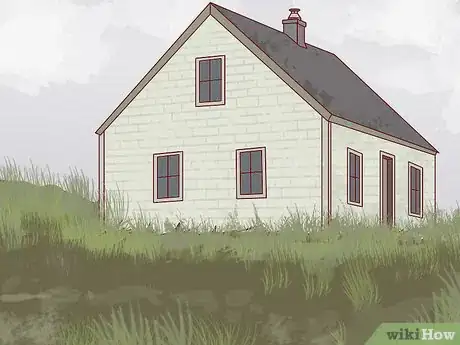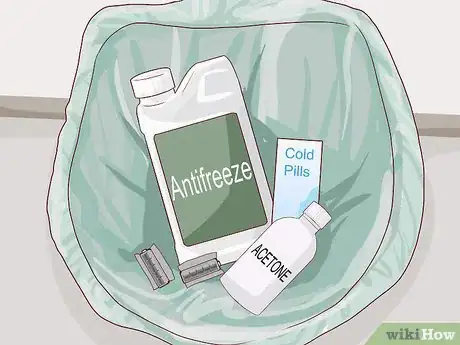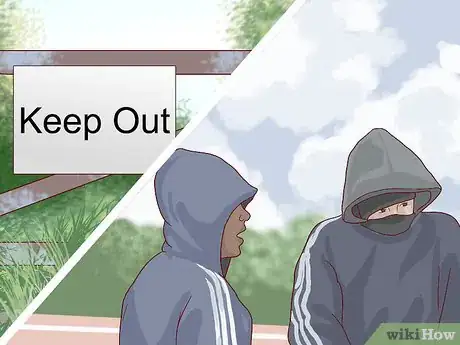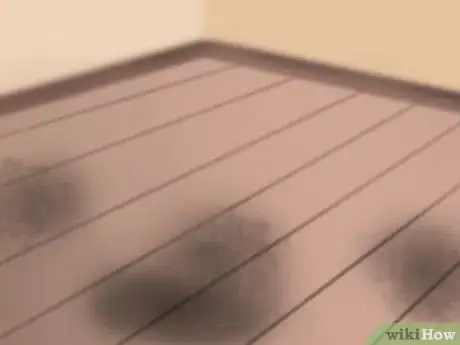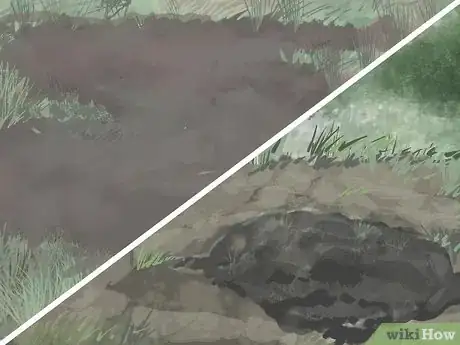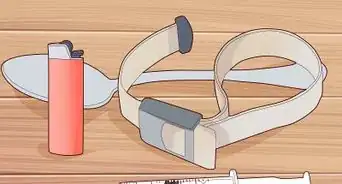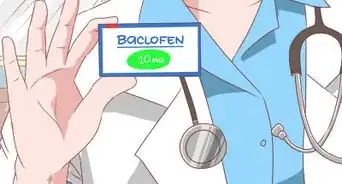wikiHow is a “wiki,” similar to Wikipedia, which means that many of our articles are co-written by multiple authors. To create this article, 13 people, some anonymous, worked to edit and improve it over time.
This article has been viewed 26,859 times.
Learn more...
Some drugs, such as methamphetamine, are manufactured in illegal laboratories. The people who run these labs, called "cooks", put themselves, their neighbors, and even their children at danger from toxic chemicals. Risky production techniques, combined with makeshift electrical work and unsafe chemical storage are a recipe for tragedy. Learning to identify a lab can save lives as long as you involve law enforcement right away rather than attempting to resolve the situation yourself.
Steps
Recognizing Signs of a Active Lab
-
1Clandestine labs often have a strong chemical odor. Look for any of the following smells:
- Ammonia
- Ether
- Rotten eggs
- Cat urine
- Skunk spray
- Nail polish remover
-
2Look at the condition of the house. Is it well kept, or is it dirty and dilapidated? "User Labs," or labs set up by those who use the drugs they make, are often unable to do proper housework due to the effects of their addictions.
- Also look at any suspicious features of the house, especially blacked out or painted over windows, diverted electrical lines, suspicious or makeshift plumbing, or excessive security features.
- Dead spots on a lawn may be a sign that chemicals have been dumped there. Having lots of loose dirt may be from burying waste.
Advertisement -
3Look at their trash. While it's not recommend for you to rummage through people's garbage, look for any waste near or around their house. Common wastes include:
- A large amount of cold medication packages containing ephedrine or pseudoephedrine.
- Opened lithium batteries
- Paint thinner
- Drain cleaner/lye
- Engine starter fluid
- Antifreeze
- Acetone
- Matchbooks or boxes
- Road flares
- Iodine
- Hydrogen peroxide
- Epsom salt or rock salt bags
- Muriatic acid
- Rubbing alcohol
- Coleman fuel
- Caustic soda bags
- Industrial chemical drums
- Laboratory glassware
- 2-liter soda bottles with tubing attached
- Propane tanks with valves that have turned blue
- Freon
- Funnels
- Rubber tubing or plumbing pipes
- Gloves
- Coffee filters or rags with red stains
- Dust masks and respirator cartridges
- Drug paraphernalia
-
4Consider people's behavior at the house. Unusual hours, late night activity or driving, and large amounts of visitors that stay for a short time may be signs of drug activity.
- If the occupants are very standoffish, paranoid, and rarely come outside the house, be wary.
- Coming outside to smoke may be a sign, as cooks do not want to ignite flammable fumes inside
- Labs often have "Keep Out" signs, security cameras, motion sensors, alarms, booby traps, and other elaborate security systems.
- If you are a landlord, and your tenants do not want you to come inside or go into a specific area, this should be a immediate red flag.
Identifying a Former Drug Lab
-
1Consider this method when you're evaluating a potential home. Moving into a house that formerly contained a drug lab can be just as dangerous as living near a active one. Unscrupulous realtors or landlords may try to sell you a property that could potentially pose a threat to your family's health.
-
2Look for chemical stains on flooring or walls. Some chemicals, such as hydrochloric acid, can stain wood and carpet flooring. Beware, however, as former damage may be covered up with new carpeting/paint.
- Also look for red staining on the ceiling. This is caused by vapors produced from heating red phosphorus or iodine with a solvent, a common method of producing methamphetamine.
-
3Be wary of burned grass and vegetation, pits, and buried waste. Waste from drug labs is highly toxic and kills grass. Cooks may have used fires in the past to burn waste.
-
4Watch out for strange plumbing, ventilation, and/or electrical work. Could the plumbing be installed to make it easier to dump chemicals without being detected by anyone outside of the house? Could venting systems be installed in basements to vent out chemical fumes? Are electrical outlets, switches, or wiring found in weird places?
Acting on Your Suspicions
-
1Don't approach the occupants. Cooks are often armed and under the influence of drugs. It is important to let the authorities handle a suspected drug lab.
- Do not play "hero" and try to stop a chemical reaction. In some processes, highly unstable chemicals may explode or form toxic gases if the reaction is stopped.
-
2Call the police, the drug hotline, or your local DEA office for help. Some cities have a designated clandestine laboratory team to properly handle these situations.
-
3Handle dangerous situation as emergencies. If you believe you or anyone else is in imminent danger, call your local emergency services immediately.
Warnings
- As stated before, do not try to play hero, and do not approach the cooks. You will put yourself and others in harms way.⧼thumbs_response⧽
- Chemicals used in the manufacture of drugs may be toxic, reactive, corrosive, or flammable. If you find any chemicals or waste, do not disturb, move, or touch it.⧼thumbs_response⧽

